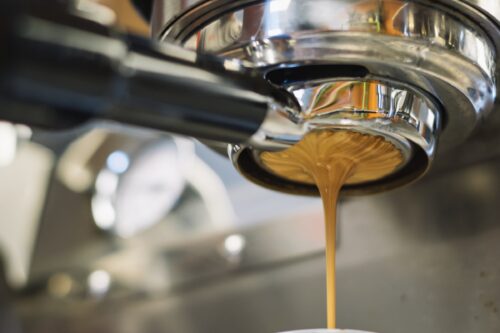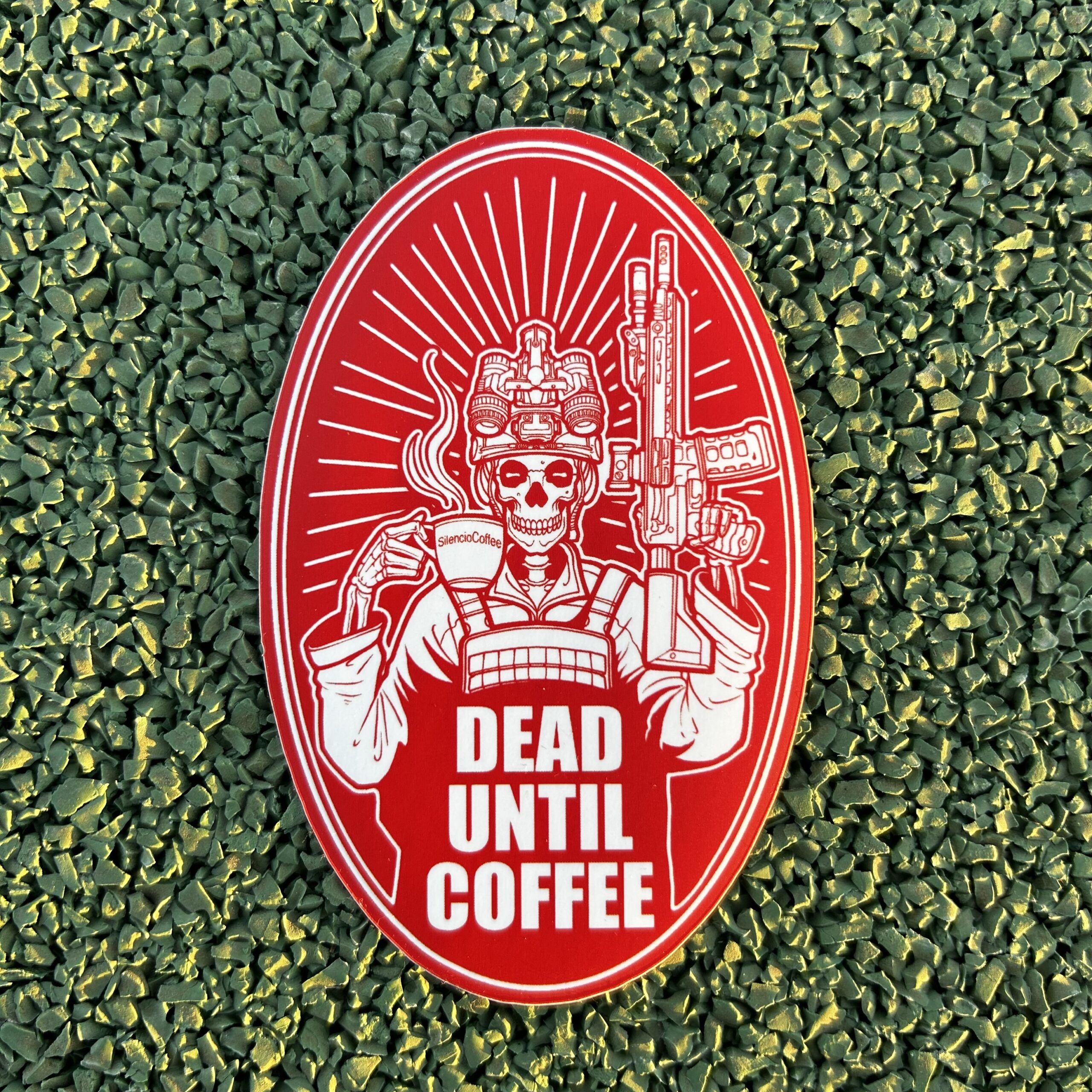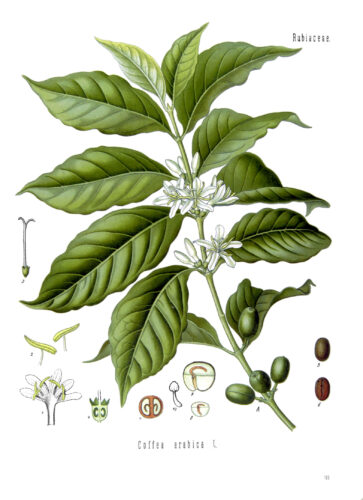The lifeblood of effective fighting is organization and communication. Coffee is the lubricant that keeps the Army/Navy/Air Force/Marines going.”— General Omar Bradley.
Different Types of Coffee
Not all coffee is the same. There are many different types of coffee, each with its own characteristics, origins, and brewing methods. Some of the main factors that influence the taste and quality of coffee are the variety of the coffee plant, the region where it is grown, the processing method, the roast level, and the brewing technique. Understanding these factors can help you appreciate the nuances and differences among various coffees and find the ones that suit your preferences and palate.
There are over 120 species of coffee plants, but the most commonly cultivated ones are Coffea arabica (also known as arabica) and Coffea canephora (also known as robusta). The first distinction to make is between the two main species of coffee plants: arabica and robusta. Arabica is the more widely cultivated and consumed type of coffee, accounting for about 60% of the global production. Arabica beans are generally more aromatic, flavorful, and less bitter than robusta beans, but they are also more sensitive to pests, diseases, and environmental conditions, making them more expensive. Robusta, on the other hand, is more resilient and adaptable, but also more acidic, harsh, and caffeinated than arabica. Robusta beans are mainly used for decaf, instant coffee, some espresso blends (at about 10-15% to aid in production of a plentiful, thick foam head, known as crema), and canned coffees.
Another way to classify coffee is by its roast level, which affects the color, flavor, and aroma of the beans. The roast level is determined by the temperature and duration of the roasting process, which can range from light to dark. Light roasts are lighter in color and have a more delicate and fruitier flavor, but also more acidity and caffeine. Dark roasts are darker in color and have a more intense and smokier flavor, but also less acidity and caffeine. Medium roasts are somewhere in between, balancing the characteristics of both light and dark roasts.
A third way to categorize coffee is by its origin or region, which refers to the geographical area where the beans are grown. The origin of coffee can influence its flavor profile, depending on factors such as soil, climate, altitude, and cultivation practices. Some of the most famous coffee regions in the world are Ethiopia, Colombia, Brazil, Indonesia, Kenya, and Jamaica. Each region produces distinctive coffees with unique aromas and tastes.
Most Expensive Coffees
If you are looking for a luxurious and exclusive coffee experience and have money to spare, you may want to try some of the most expensive coffees in the world. These coffees are rare, exquisite, and often produced using unconventional methods.
Black Ivory Coffee ($1,685/pound): This coffee is made from Thai arabica beans that are eaten and digested by elephants. The process reduces the bitterness and enhances the flavor of the beans, resulting in a smooth and delicate brew.
Ospina Dynasty Coffee ($1,431/pound): This coffee comes from one of Colombia’s oldest coffee companies, founded in 1835. The beans are hand-picked, sun-dried, and roasted to perfection. The coffee has notes of peach, coconut, and macadamia.
Kopi Luwak ($600/pound): This coffee is similar to Black Ivory, but it involves Indonesian civet cats instead of elephants. The cats eat the ripest coffee cherries and excrete the beans, which are then collected and roasted. The coffee is smooth and never bitter.
Hacienda Esmeralda Geisha ($350/pound): This coffee is grown in Panama from Ethiopian Geisha beans that were rediscovered in the 1960s. The coffee has a unique and floral flavor that has won many awards and accolades.
Jamaican Blue Mountain ($100/pound): This coffee is grown in the Blue Mountains of Jamaica, where the climate and soil are ideal for coffee cultivation. The coffee has a herbal, floral, and nutty flavor that is well-balanced and rich. Ian Fleming, the creator of James Bond, was fond of Jamaica Blue Mountain coffee, which he considered to be the most delicious in the world.

Brewing Methods
Finally, coffee can also be differentiated by its brewing method, which is the technique used to extract the flavor and aroma from the ground beans. There are many different ways to brew coffee, each with its own advantages and disadvantages. Some of the most common brewing methods are drip filter, French press, espresso machine, moka pot, pour-over, cold brew, and Turkish coffee. Each method requires different equipment, grind size, water temperature, brewing time, and ratio of coffee to water. The three most common coffee brewing methods are drip, French press and espresso.
Drip coffee, which is also known as filter coffee or pour-over coffee, involves pouring hot water over ground coffee beans that are placed in a paper or metal filter. The water passes through the coffee grounds and drips into a carafe or mug below. This method produces a clear and consistent brew, with a balanced flavor and low acidity. However, some of the oils and aromas of the coffee beans may be lost in the filter, resulting in a less complex and aromatic cup.
French press, which is also known as press pot or cafetière, involves steeping coarsely ground coffee beans in hot water for several minutes, then pressing down a metal mesh plunger to separate the coffee grounds from the liquid. This method produces a rich and full-bodied brew, with a high level of oils and aromas. However, some of the fine particles of the coffee grounds may remain in the liquid, resulting in a cloudy and bitter cup.
Espresso, which is also known as short black or caffè. involves forcing pressurized hot water through finely ground coffee beans that are packed into a metal portafilter. The water extracts a concentrated amount of flavor and caffeine from the coffee beans, resulting in a small and strong brew, with a thick layer of crema on top. This method produces a complex and intense brew, with a high level of acidity and bitterness. However, this method requires specialized equipment and skills, and may not suit everyone’s taste.
As you can see, there are many types of coffee to choose from, depending on your personal preference and mood. Whether you prefer a smooth and mild arabica or a strong and bold robusta; a light and fruity roast or a dark and smoky one; a single-origin or a blend; a drip filter, French press, or an espresso machine; you can always find a coffee that suits your taste buds. Coffee is a versatile and diverse drink that can offer you a variety of flavors and experiences.
Silencio Coffee
And for outstanding coffee, I recommend that you check out Silencio Coffee. Mike Kurcina, founder and editor of Spotter Up is one of the founders of Silencio Coffee. That being said, my recommendation is based on the quality of the coffee.
Source
Silencio Coffee
SilencioCoffeeCo.com
*The views and opinions expressed on this website are solely those of the original authors and contributors. These views and opinions do not necessarily represent those of Spotter Up Magazine, the administrative staff, and/or any/all contributors to this site.


